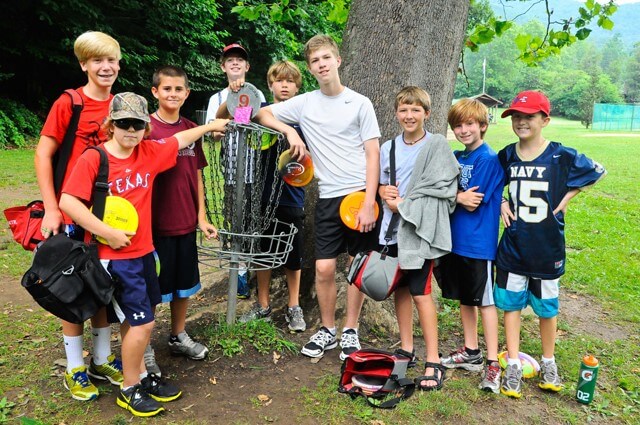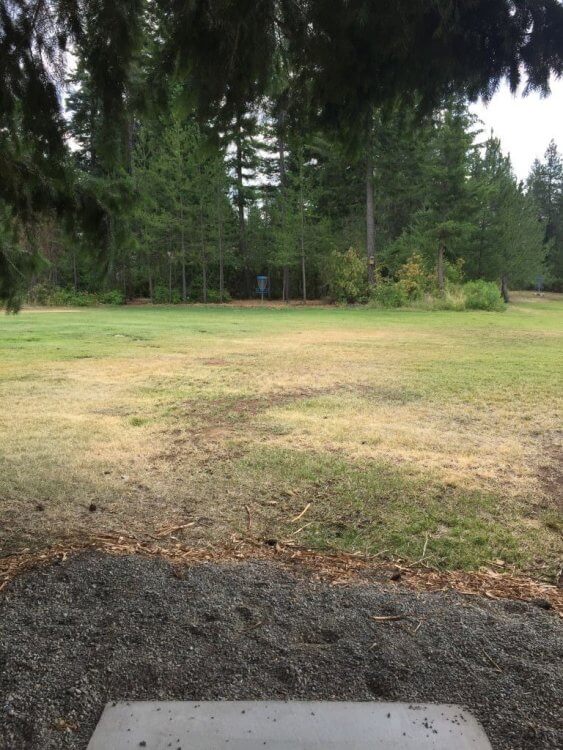I grew up a three-sport athlete, but I always had a love of outdoor recreation – especially rafting, mountain biking, and snowboarding. Unfortunately, with a limited income and the time constraints associated with being a college student, it was hard to get away for extended periods of time to do these activities.

When I first played disc golf, I was surprised to find out how inexpensive the game was. Then I was amazed at how much it was like one of my favorite games – golf. All of my favorite aspects of golf were present in disc golf, such as frustration tolerance, scoring, physical exertion, social engagement, appreciation for nature, and etiquette. As time passed, I became fully entranced by the game and decided to pursue a doctorate studying the elusive counter-culture of disc golf.

While disc golf may be a relatively unfamiliar sport to the general public, the Professional Disc Golf Association (PDGA) estimates 500,000 people play it annually, and as many as eight to twelve million people have played disc golf at some point in their lives (PDGA , 2018). Although research on disc golf is limited, public disc golf courses are perpetually full of recreation enthusiasts, leading me to wonder, “Why didn’t I hear about this game sooner?” and “Why wasn’t this taught in physical education classes?”

There are few sports where people can remain competitive well into old age, but disc golf is a sport where players, such as the 2016 Master’s World Champion, John E. McCray (48 years old), can compete and win against younger athletes (Latitude 64, 2020). Like golf, disc golf is a sport for people of nearly all physical and cognitive abilities and is considered a low-impact lifetime leisure activity (Tuten & Conkell, 1999) that is typically free to play, since over 90% of courses exist in public parks (Oldakowski & McEwen, 2013). Disc golf can be played by a single person for independent mastery or played as a competitive multiple-participant sport where players attempt to score lower (fewer strokes) than their fellow competitors.
Much like golf, players walk between each throw to reach their next throwing position. Unlike traditional golf, golf carts are uncommon and an emphasis is placed on physical exercise. One 18-hole round of disc golf (on a traditional disc golf course) can account for 56 percent of the 10,000 recommended steps required for adults to maintain healthy walking habits (Menickelli, Barney, & Cooper, 2016). Due to the aforementioned properties of disc golf, the sport has experienced tremendous growth since its inception in 1975. As of 2018, there were 8,364 courses in the world with over 6,300 of them in the United States (PDGA, 2019).

Disc Golf Curriculum
For physical education classes, disc golf can be played with a single golf disc which is different from traditional “frisbees”. A golf disc is specifically designed to tolerate the throwing style of the players, whereas frisbees are not. When purchasing discs for a school, companies will often offer a significant discount, often only $8 per disc. Additionally, there are numerous excellent resources available for teaching students disc golf. EDGE is an organization offering curriculum packages that “cover a broad range of topics within both disc golf and academics(EDGE, 2015). There are several short videos on YouTube, that are designed to help teach the sport of disc golf to people of all ability levels and there are also videos that cover the “rules for play“

Consider Developing “Pocket Courses”
The Aspen Institute (2018) has found that while more kids are physically active, team and individual sport participation has continually decreased since 2011. This could be partly due to the rising costs associated with sport participation (Cohen, 2019). If a school district has roughly five (5) acres of under-utilized land, they can permanently install a pitch-and-putt style or “Pocket Disc Golf Course” for as little as $10,000. These miniature disc golf courses are perfect for physical education classes, school clubs, and community members of varying ages and ability levels.

Rural Success Story
A small school in North Idaho recently reached out to me to determine if they could feasibly install a permanent disc golf course for their physical education curriculum. They were concerned because they did not have much land to work with and most of the land they had was a completely overgrown and unmanaged forest. Much to their surprise, that is usually the perfect type of land for pocket disc golf courses. They had a very small budget and it was comprised primarily of donations they had collected through school initiatives.

With the help of experienced course designers, volunteers, community support, and donated materials, Timberlake Middle School and High School in Spirit Lake, ID, was able to afford a beautiful disc golf course that functions as a physical education site during school hours and a free community recreation site outside of school hours. Administrators and teachers at the school use the course for team building activities, coaches from all sports encourage their kids to use the course before and after practice, and other students play the course after school while waiting for their parents to arrive. For pictures of Tiger’s Den Disc Golf Course, click here.

Concluding Thoughts
Disc golf is a rapidly growing, non-cost prohibitive sport that can be enjoyed by people of nearly all physical and cognitive abilities, particularly when courses are designed with a user-based perspective. It is a really rewarding experience to show physical education teachers how to instruct the sport of disc golf and teach their students a lifetime leisure activity. Schools looking for a fiscally responsible and inclusive alternative to traditional sports should consider adding disc golf to their curriculum, given the minimal cost and negligible maintenance required to have a permanent recreation site designed and installed.
Fun Videos of Kids and Professional Disc Golfers
Kids Disc Golf (Facebook) – https://www.facebook.com/kidsdiscgolf/videos/1094384867571075/
This is Disc Golf (YouTube) – https://www.youtube.com/watch?v=gJaxph0J6FE
Designers of Tiger’s Den Disc Golf Course in Spirit Lake, ID
Fulltime Recreation – http://www.fulltimerecreation.com/
Find a Course (click the link and enter your zip code to find a course near you)
This article was originally published on: April 1, 2020
References
Aspen Institute. (2018). State of Play 2018. https://assets.aspeninstitute.org/content/uploads/2018/10/StateofPlay2018_v4WEB_2-FINAL.pdf
Cohen, K. (2019, August 11). Kids aren’t playing enough sports. The culprit? Cost. https://www.espn.com/espn/story/_/id/27356477/kids-playing-enough-sports-culprit-cost
EDGE. (2015). EDGE curriculum. Retrieved from Educational Disc Golf Experience: https://edgediscgolf.org/?page_id=16
Latitude 64. (2020). John E McCray. https://www.latitude64.se/team-64/johne-mccray/
Menickelli, J., Barney, D., & Cooper, C. (2016, January). Disc golf and walking benefits: A pedometer-based physical activity assessment. International Journal of Physical Education, Fitness and Sports, 1-5.
Oldakowski, R., & McEwen, JW (2013, August 26). Diffusion of disc golf courses in the United States. Geographical Review, 103(3), 355-371.
PDGA. (2019, September 18th). PDGA and disc golf demographics. https://www.pdga.com/demographics
Tuten, C., & Conkell, C. (1999). Disc golf: A lifetime activity. Strategies: A Journal for Physical and Sport Educators, 19-21.
